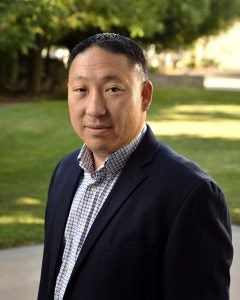
Aaron Fukuda is general manager of the Tulare Irrigation District, general manager of the Mid-Kaweah Groundwater Sustainability Agency and a participant in the Kaweah Regional Conservation Investment Strategy steering committee process.
Growing up in Hanford, California, Aaron Fukuda learned about the connections between water, animals and plants at an early age. His mother, a biologist, taught him how to study owl pellets and how rain changed the landscape when he was a kid.
As an adult, Fukuda is more focused on what’s happening both on the ground and underground with the region’s increasingly scarce water supplies.
Fukuda wears three hats that give him a unique perspective on the region’s water and land issues as general manager of the Tulare Irrigation District, general manager of the Mid-Kaweah Groundwater Sustainability Agency and a participant in the Kaweah Regional Conservation Investment Strategy (RCIS) steering committee process. Read More









